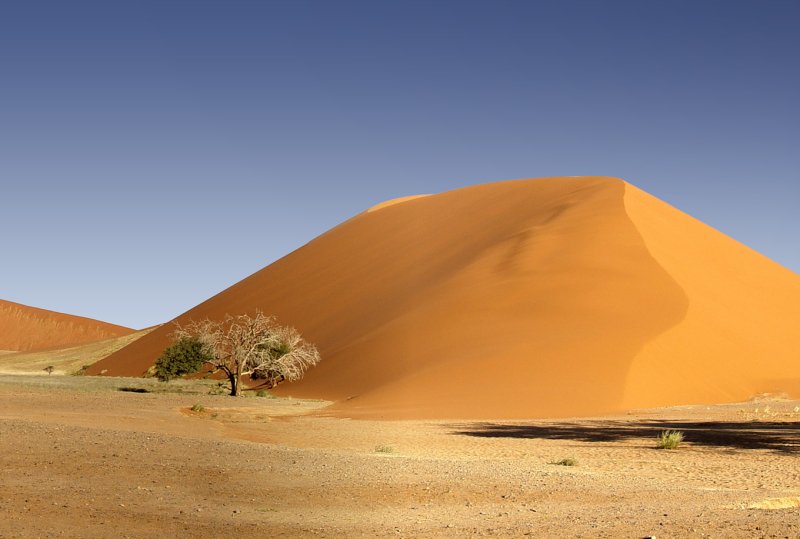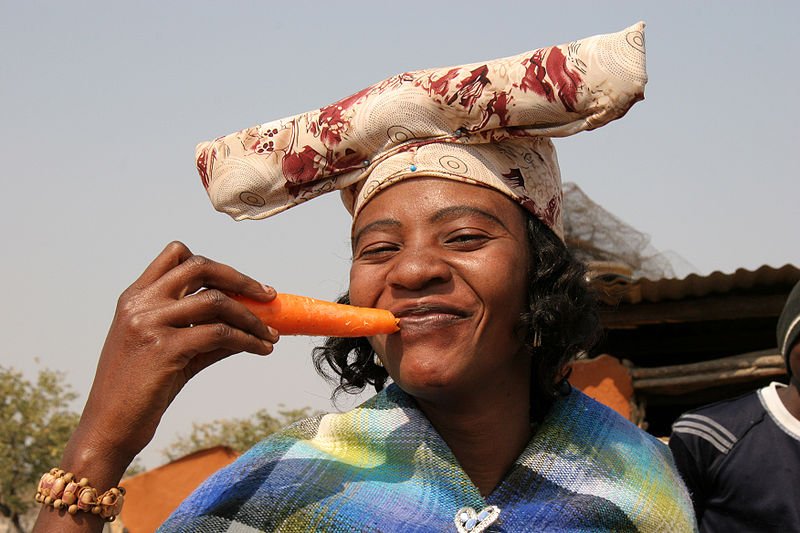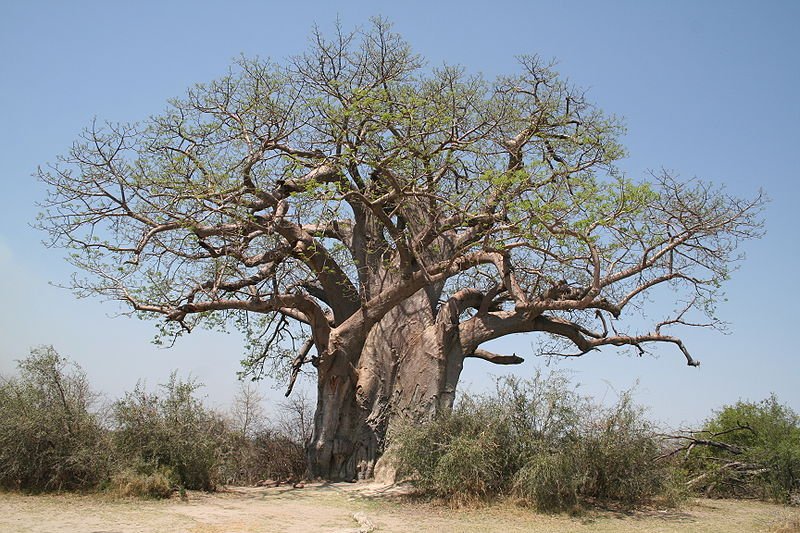 Dunes of Sossusvlei, Namibia
Dunes of Sossusvlei, NamibiaSource: https://commons.wikimedia.org/wiki/File:Dune_45,_Sossusvlei_%28185730408%29.jpg
Author: Damien du Toit

Namibia is a country in southwestern Africa. Covering 825,418 sq km (318,696 sq mi), Namibia is bordered by Angola to the north, Zambia to the northeast, Botswana to the east and South Africa to the south. It has a population of 2.1 million people (2011 estimate). Its capital and largest city is Windhoek.
Namibia is a republic with a president as head of state and prime minister as head of government. English is the official language of the country. Namibia is in the West Africa Time Zone, which is an hour ahead of Coordinated Universal Time (UTC+1) and two hours ahead during Daylight Saving Time in summer.
 Bushman's Paradise at Spitzkoppe, Namibia
Bushman's Paradise at Spitzkoppe, NamibiaSource: https://commons.wikimedia.org/wiki/File:Bushman%27s_Paradise_at_Spitzkoppe_28.06.2008_11-14-40.jpg
Author: Hansueli Krapf

The official currency of Namibia is the Namibian dollar. Traffic is driven on the left here, just as in Britain. The phone IDD code is +264. The electricity is 220-240V/50Hz.
The economy of Namibia is based on mining, followed by agriculture, manufacturing and tourism. In 2009, the country has an estimated nominal GDP of $9.459 billion, equivalent to a per capita nominal GDP of $4,543. Its per capita GDP at purchasing power parity stood at $6,614.
In terms of area, Namibia is the 34th largest country in the world, right after Venezuela. The Tropic of Capricorn cuts through the middle of the country. Much of Namibia is covered by desert, including the Namib Desert and Kalahari Desert, where there is little rainfall throughout the year.
 Herero woman, Namibia
Herero woman, NamibiaSource: https://commons.wikimedia.org/wiki/File:Namibie_herero_0703a.jpg
Author: Yves Picq

Namibia is historically the homeland of the Bushmen, Damara and Namaqua peoples until the 14th century, when Bantu-speaking tribes moved in from central Africa. The first European to arrive here were Portuguese navigator Diogo Cão in 1485 and Bartolomeu Dias in 1486, but were not made a Portuguese colony. It fell under German control in 1884.
Between 1904 and 1907, the local Herero and Namaqua waged an armed warfare against the German, resulting in a genocide that killed half the Namaqua population and 80% of the Herero.
In 1915 South Africa defeated the Germans and colonied Namibia until 1919, when it administered the country as a League of Nations mandate territory. At that time, Namibia was known as South-West Africa. South Africa desired Namibia, even unofficially making it its fifth province, and refused to surrender its mandate. This resulted in a military movement in Namibia to press for independence.
 Baobab tree in Mahangu National Park, Namibia
Baobab tree in Mahangu National Park, NamibiaSource: https://commons.wikimedia.org/wiki/File:Adansonia_digitata_MS_10040.jpg
Author: Marco Schmidt

The wheels for Namibian independence finally turned in 1988, and the country became officially independent on 21 March, 1990. Since then, it has successfully transitioned from a country ruled by a white minority to a parliamentary democracy. In 2005, a peaceful transfer of power took place from President Sam Nujoma to his successor Hifikepunye Pohamba. Namibia is today a member of the United Nations and the Commonwealth of Nations.
Planning your visit to Namibia
Visitors who do not need a visa to enter Namibia include the citizens of Angola, Australia, Austria, Belgium, Botswana, Brazil, Canada, Countries in the Commonwealth of Independent States, Cuba, Denmark, Finland, France, Germany, Iceland, India, Ireland, Italy, Japan, Kenya, Lesotho, Liechtenstein, Luxembourg, Malaysia, Malawi, Mauritius, Mozambique, New Zealand, Netherlands, Norway, Portugal, Russia, South Africa, Singapore, Spain, Swaziland, Sweden, Switzerland, Tanzania, Ukraine, United Kingdom, United States, Zambia and Zimbabwe.The main gateway to Namibia is Winhoek Hosea Kutako International Airport (WDH), located 45 km to the east of the capital. The airport handles mostly international flights while domestic flights are handled by the smaller Windhoek Eros Airport. There are regular flights from Cape Town, Frankfurt, Johannesburg and Munich, among others.
Preparing Money for your trip to Namibia
The currency used in Namibia is the Namibian dollar (NAD).Major Towns in Namibia
Places of Interest in Namibia
- Brandberg Mountains
- Etosha National Park
- Fish River Canyon Park
- Kaokoland
- Opuwo
- Skeleton Coast
- Sossuvlei
- Spitzkoppe
- Waterberg Plateau Park
 Latest updates on Penang Travel Tips
Latest updates on Penang Travel Tips

Copyright © 2003-2025 Timothy Tye. All Rights Reserved.

 Go Back
Go Back